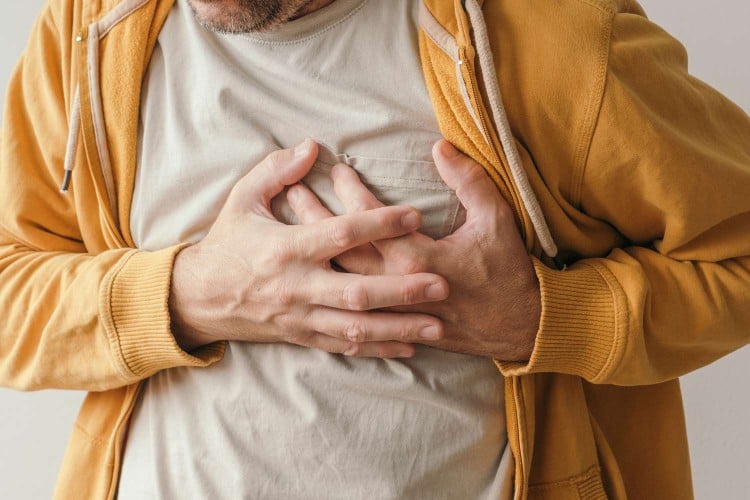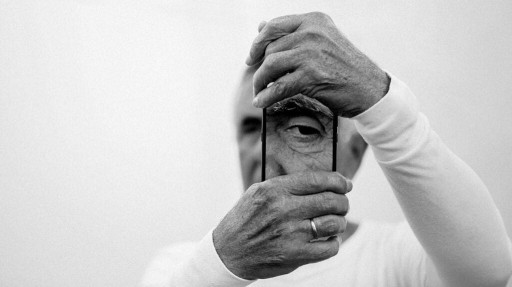- New research found that recognizing heart attack symptoms is linked with faster life-saving treatment in a hospital.
- Men and women, as well as people with diabetes, often present different heart attack symptoms.
- Experts recommend immediately seeking medical attention as soon as you believe you're experiencing heart attack symptoms.
Recognizing heart attack symptoms is linked with faster life-saving treatment in the hospital, a new study finds.
While this may not seem like a groundbreaking or novel idea, the research found just how important it is to be able to react efficiently when heart attack symptoms first present themselves.
Recognizing heart attack symptoms and acting on them rather than just ignoring them and hoping they go away is crucial for receiving proper care.
“About the worst thing people do in this situation, which is very common, is that they go take a nap,” Allan Stewart, MD, a cardiologist and the Chairman of Surgery and Medical Director of the Cardiovascular Institute at HCA Florida told Health.
“By the time they get to the hospital they are well into the heart attack and it might be too late for life-saving therapies available to reverse it as some of the heart muscle may have already died,” Stewart said. “That’s why this study is so important and why it was conducted in the first place.”

Getty Images / BitsAndSplits
Who Is More Likely to Recognize Symptoms of a Heart Attack?
The new study found that patients who had a heart attack in the past were more likely to know the symptoms compared to first-time sufferers. Yet, across the board, recognition of heart attack symptoms was low.
“Most patients could identify chest pain but less than one-third knew the other symptoms,” said Kyehwan Kim, MD, lead study author out of Gyeongsang National University Hospital, Jinju, Republic of Korea.
This is why it is imperative to understand the diversity of heart attack signs and symptoms, ranging from the classic chest pain and radiating pain to the arm, jaw, and neck, to dizziness, cold sweats, breathlessness, nausea, vertigo, or general feeling of malaise and anxiety.
Kim’s new heart attack study pooled data from KRAMI-RCC, a registry of patients who had experienced a myocardial infarction (heart attack) in the Republic of Korea.
There were a total of 11,894 myocardial infarction (MI) patients in the final analysis, of whom 10,623 (90.4%) had a first-time cardiovascular event and 1,136 (9.6%) had a repeat event.
Just over half (52.3%) of MI patients were able to correctly recognize the symptoms of a heart attack.
Chest pain was the primary symptom that most people could associate with a heart attack, while shortness of breath, cold sweats, and radiating pain, were recognized by less than a third of the heart attack patients, and lightheadedness and stomach ache were identified by only 7.5% and 1.3%, respectively.
Just 14.4% of patients with a first-time myocardial infarction were able to identify the symptoms.
Aside from having a repeat myocardial infarction, there were other significant disparities in the demographics of the patients who could and could not recognize the symptoms of a heart attack.
Men were able to recognize heart attack symptoms more than women, along with people who were of a younger age, higher education level, and living with a spouse.
Recognizing Both Common and Less Common Symptoms of a Heart Attack
There’s a wide range of heart attack symptoms, and they may not be what you’ve seen in medical shows on TV.
“In terms of symptoms, what we commonly see on television or in the movies are people getting numbness in their left arm and pain in their chest, yet that’s not necessarily how all heart attacks present,” said Steward. “In fact, heart attacks present differently in men vs. women.”
Stewart explained that men more commonly experience chest pressure, as well as pain that goes down the left arm, sometimes moving up toward the left side of the jaw as well. This pain—called radiating pain—can happen with or without pressure on the chest.
This chest pressure and radiating pain often come out of nowhere.
Women, on the other hand, don’t typically feel that chest pressure, but rather more commonly experience symptoms like anxiousness or nausea, Stewart said.
He explained that since those symptoms aren’t as commonly associated with a heart attack, women tend to delay medical care.
That doesn’t mean these symptoms aren’t just as serious as chest pressure.
“While men go to the hospital more frequently with heart attacks, women more frequently die of heart attacks,” said Stewart.
Many of the more common symptoms of a heart attack are based on the experiences of male patients, particularly smokers or men with other well-defined risk factors for heart disease, explained Nick West, MD, a cardiologist and the Chief Medical Officer and DVP of Global Medical Affairs for Abbott’s Vascular Business
This can make it difficult for women or individuals who fall outside of these risk groups to identify heart attack symptoms that they’re more likely to experience.
“Women and people with diabetes may not necessarily present in classical fashion, but unheralded acute symptoms of a cardiovascular nature should prompt suspicion,” West said. “Additionally, ethnic or cultural descriptors and interpretation of symptoms should also be considered when assessing patients with possible heart attacks.”
Both West and Stewart agree that less common symptoms of a heart attack, like abdominal discomfort and anxiousness, are important to keep in mind no matter what demographic a patient is a part of.
Heart Attack Symptoms Women Shouldn't Ignore
Linking Quick Recognition With Positive Treatment Outcomes
According to Stewart, one of the primary reasons people die in a hospital from a heart attack is because of delay in seeking treatment or receiving treatment.
“Many people do not want to accept the fact that they’re having a heart attack and that they could die,” Steward said. “They ignore their symptoms at home and it’s only when their symptoms become too severe that they come in.”
But this course of action actually makes the heart attack progress.
In reality, rapid recognition of heart attack symptoms and access to healthcare services is the key to receiving the care that is required for all potential heart attack cases.
Kim and his team's findings revealed that patients who could correctly recognize heart attack symptoms were more likely to receive treatment to open the arteries and restore blood flow within two hours of the onset of symptom recognition relative to those who were not aware of the symptoms of a heart attack (57.4% vs 47.2%).
This translated to less invasive treatment and superior survival rates. The in-hospital mortality rate of the group who could recognize symptoms and access the treatment within two hours fell to just 1.5% compared to 6.7% of those who could not recognize heart attack symptoms.
“The findings indicate that education is needed for the general public and heart attack survivors on the symptoms that should trigger calling an ambulance,” Kim said. “In our study, patients who knew the symptoms of a heart attack were more likely to receive treatment quickly and subsequently survive.”
Important Reminders About Heart Attack Recognition and Care
According to West, ignoring heart attack symptoms may also be ignoring other critical health needs.
“While atherosclerotic coronary heart disease (blockages due to furring up and blockage of arteries) remains the most common cause of heart attack, other causes, such as spontaneous coronary artery dissection, Tako-Tsubo cardiomyopathy, and coronary embolism, should be considered even in people without risk factors, especially younger and female patients,” he said.
Stewart noted that it is best to seek medical help as soon as you are experiencing pain or symptoms that are unusual to you.
“You’re far better off going to the doctor and finding out there’s nothing wrong than not going to the doctor and finding out you experienced a heart attack,” he said.
He also recommends that everyone, especially those who are at a higher risk of a cardiovascular event, have a home defibrillator. He also advises people to carry aspirin.
“Even taking two aspirin between when you are having symptoms to the time you see a doctor will improve your chances of survival,” he said.
Overall, your best chance for survival is to recognize you are having a heart attack and get to an emergency room as quickly as possible.
“You are far better off going unnecessarily to the doctor than delaying your care,” Stewart said. “One has a consequence of a few minutes and another has a consequence that may affect the rest of your life.”
Nearly Half of Heart Attack and Stroke Survivors Don't Know What 'Bad' Cholesterol Is








